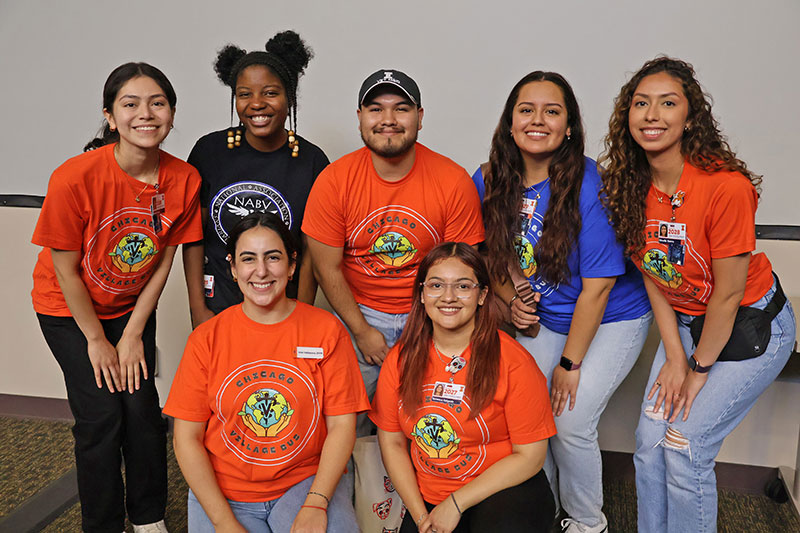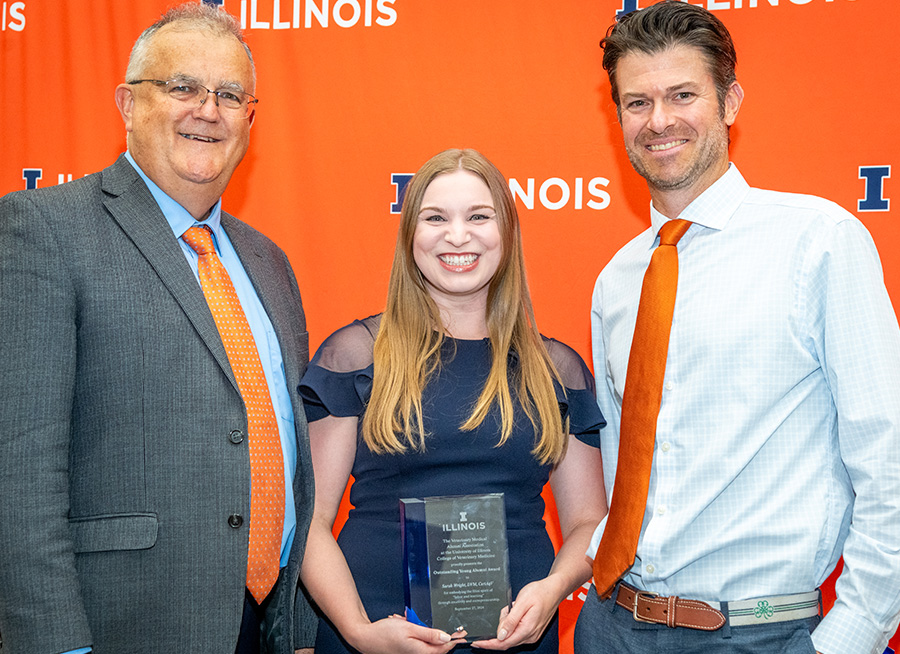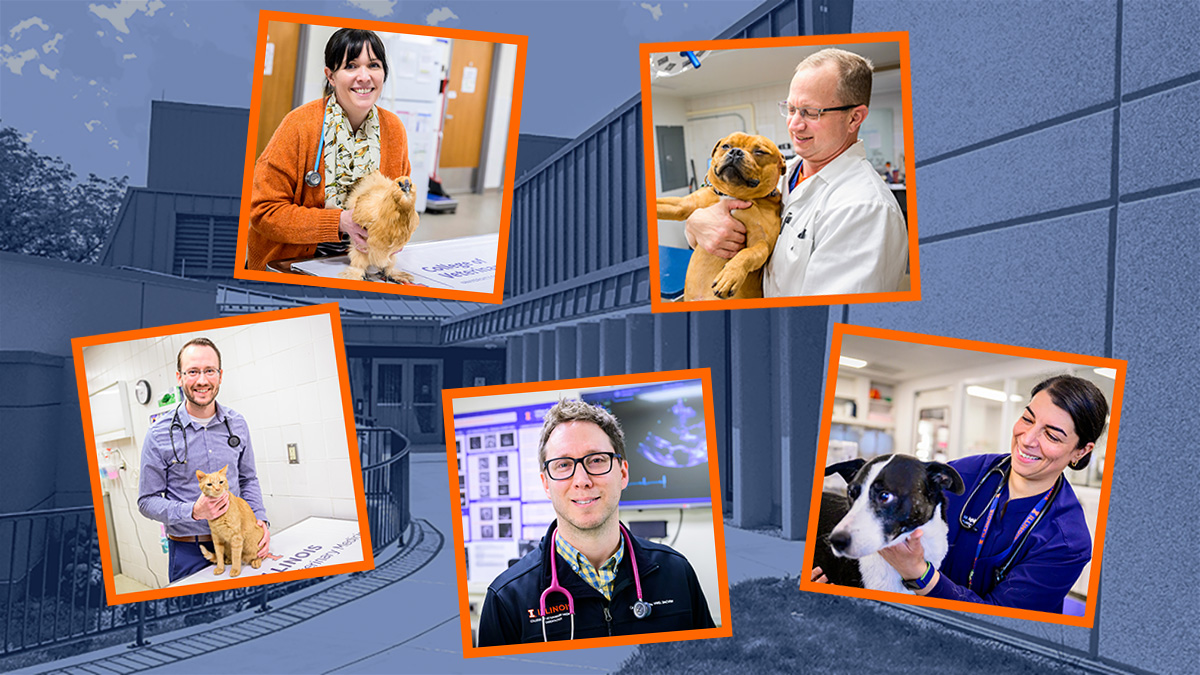This message will appear in the October/November 2021 issue of the Chicago Veterinary Medical Association Bulletin.
Do you recall your first job after graduation? Did you feel ready to practice? Did you feel supported in your new workplace?
Dr. Gene Pavlovsky heads our hospital’s primary care service and serves as medical director for the new Veterinary Medicine South Clinic. This facility is located across Hazelwood Drive from the Veterinary Teaching Hospital. Since early 2020, it has housed primary care, the zoological medicine service, the Wildlife Medical Clinic, and the headquarters for our shelter medicine program.
When Dr. Pavlovsky graduated from the University of Guelph’s Ontario Veterinary College in 2003, he did not feel “practice ready.” Since taking charge of the primary care service last year, he has structured the student rotation to build competence and confidence in these soon-to-be veterinarians.
The Real World
“Our rotation is hands-on for students in every aspect: medicine, client communications, and in the business aspects,” he says. In this regard, it differs from rotations on the hospital’s specialty services.
It’s on us to invest time in new graduates and provide specific guidance about the practice’s culture and expectations. Build your new colleagues up. Everyone will make mistakes and responding in a positive and supportive manner will go a long way toward creating an open and trust-based relationship.
Dr. Gene Pavlovsky, Medical Director | Veterinary Medicine South Clinic
Yes, there are morning rounds, but the rounds are topic-based in addition to being case-based. (One topic, for example, is how to succeed in navigating the first 3 to 6 months in practice.) Students select from the day’s appointments the cases which they believe will benefit them the most from the standpoint of practical or theoretical interest and learning. This approach lets students fill gaps in their clinical resume.
As you would expect, primary care sees more patients and patients with more routine concerns than specialty services see. Students draw blood, place IV catheters, and perform routine surgeries and dental cleanings. Most students actively participate in at least two surgeries during the two-week rotation.
Perhaps the most distinctive difference is that students take the lead in delivering care and communication with each visit. A faculty member stays with them one-on-one, from beginning to end, to observe and provide feedback. This approach allows the faculty mentors to provide immediate feedback on the students’ communication skills, physical exam technique, and other aspects of their developing skillset having observed them directly.
“Our rotation aims to mirror the real world as much as possible. Students witness the logistics of running a practice. We operate as any private practice would in the way we structure appointments and client communication.”
Students on this rotation also care for the stray dogs and cats that have been brought to the hospital with an illness or injury. Before morning rounds students examine and treat these animals that will be picked up by animal control later in the day.
The Client Experience
Dr. Pavlovsky and Dr. Justin Fehr, a 2016 DVM graduate of the college who joined the primary care service in March 2020, emphasize to students the value of delivering a great client experience. Caring for clients is as much a part of everyday practice as giving injections, they teach.
“The client experience plays a huge role in the client’s overall perception of care,” says Dr. Pavlovsky. “We instill in students the need to provide care, not just medicine. The client is an important part of the care team, and they should be included in the decision-making process. I believe we are here to advise them, not to tell them what to do.”
To this end, students learn to engage the clients in a conversation about their pets, to ask open-ended questions, and to ask the right questions at the right time. Students are also coached to offer concise recommendations to clients. When presenting several options, they are taught it is important to provide their specific recommendation and explain which one represents optimal patient care.
The doctors also encourage students to see things from the clients’ perspective. For example, if the client arrives late or doesn’t follow recommendations, Dr. Pavlovsky advises students to give the client the benefit of the doubt and to work with them to develop alternative ways to arrive at a positive outcome. When students assume positive intent on the part of the client, the conversation often proceeds in a better direction.
“Veterinary medicine can be a stressful profession at times,” says Dr. Pavlovsky. “We hope to teach students strategies for making their days less stressful.”
The New Graduate Experience
Dr. Pavlovsky spent the first years of his career in a multi-doctor practice in the Chicago area. Then he moved to Champaign to lead a local Banfield hospital. In his 10 years as a chief of staff with Banfield, he benefited from extensive training on leadership, conflict resolution, mentorship, and client service. The onboarding process for new DVM graduates at Banfield included spending the first 8 to 12 weeks on the job paired with an experienced coach veterinarian: First the new vet shadows the experienced one, then those roles are reversed.
While he was at Banfield, Dr. Pavlovsky had frequent contact with Illinois veterinary students on externships. He also taught in Champaign’s Parkland College veterinary technician program. When he learned of the position to head the primary care service at the Veterinary Teaching Hospital, he saw it as a way to combine his love for teaching and for clinical practice.
It’s Not Easy Being Green
Dr. Pavlovsky reminds veterinarians that many of their new associates in practice need active mentorship. Just as the client experience deeply influences the perception of the quality of care, so your efforts to welcome and care for your new hires set the stage for their loyalty and job satisfaction.
“It’s on us to invest time in new graduates and provide specific guidance about the practice’s culture and expectations,” he says. “Build your new colleagues up. Everyone will make mistakes and responding in a positive and supportive manner will go a long way toward creating an open and trust-based relationship.
“In fact, a single negative experience surrounding an error or misstep can often be hugely detrimental. I believe that key to developing confident and competent veterinarians is to create a culture of support and acceptance that co-exists with accountability and leadership by example.”
Our students’ response to the mentoring approach in the primary care rotation has been overwhelmingly positive. “Most students have some concerns about entering practice. We use the primary care rotation to really give students a chance to lead every patient encounter,” says Dr. Pavlovsky. “By the end of the second week of the rotation, students are better prepared to start their professional career.”

![[Dr. Pavlovsky observes a student who is examining a dog]](https://vetmed.illinois.edu/wp-content/uploads/2021/09/Pav-246.jpg)


